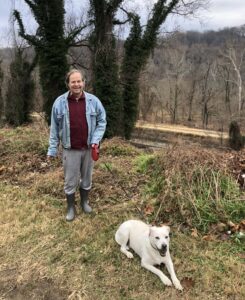To celebrate the 50th anniversary of the C&O Canal becoming a National Historical Park, we are featuring 50 Canal Stories throughout 2021. Each story will take a look at a person’s relationship with the C&O Canal. Whether an NPS ranger, a volunteer, or a visitor, everyone has a story to tell about the canal! If you want to share your story, submit it to us at the link here, email it to us at [email protected] or post it on your social media feeds with the hashtag #MyCanalStory.
John Guttmann, Board Chair of the C&O Canal Trust
C&O Canal Trust: What is your relationship with the canal?
John: I live in the Palisades neighborhood of Washington, DC. Our house overlooks the Canal. It is part of the fabric of life for us. I have also served on the Board of Directors of the C&O Canal Trust since 2015, serving as Development Committee Chair, Vice Chair, and now Chair of the Board of Directors.
C&O Canal Trust: What is your favorite project or accomplishment during your time on the C&O Canal Trust’s Board of Directors?
John: Towpath Forever! Nothing is more basic than the Trust’s efforts supporting the Park’s work to maintain this great American resource for our communities today and tomorrow.
C&O Canal Trust: Do you have a favorite memory of the canal?
John: Years ago, I biked from Hancock to Georgetown with one of my close friends. It was my first sustained experience on the Canal. That trip opened my eyes to what a remarkable resource the Park is for our entire region and, in fact, for all of America.
C&O Canal Trust: What is your favorite spot on the canal?
John: Definitely Widewater. Every time I am there, I am newly astonished that such a remarkable place of peace and beauty exists so close to a major city.
C&O Canal Trust: What does the canal mean to you?
John: The Canal is a constant reminder of the importance of our National Parks. It is part of our history. It is a remarkable piece of the natural world, full of an abundance of wildlife – a place for contemplation and regeneration. However, like all of our National Parks, it requires support and attention from the public because of shameful resource shortages. That is where the Trust and its supporters come into play.
